Introducing Indigenous Australian stories to young children is vital for fostering cultural awareness, respect, and understanding. It teaches children about the histories and realities of Aboriginal and Torres Strait Islander peoples, promoting empathy and inclusivity, and emphasizes the importance of caring for the land and respecting nature, instilling a sense of responsibility in young readers. The following article provides a list of Top 10 Popular Indigenous Australian Books For Young Children, Main Themes Explored In These Books, Linking These Books To 8 Aboriginal Ways Of Learning, and more.
Top 10 Popular Indigenous Australian Books For Young Children
- Numbers All Around Us by Rachael Sarra
A beautifully illustrated board book that introduces young children to numbers through Aboriginal art. It has received positive feedback for its engaging visuals and simple narrative.

- Come Together: Things Every Aussie Kid Should Know about the First Peoples by Isaiah Firebrace and Jaelyn Biumaiwai
A vibrant and engaging book that teaches kids about Aboriginal culture and history.

- Nature All Around Us by Kimberly Engwicht
A visually stunning book that explores Australia’s landscapes through Aboriginal artwork.

- Welcome To Country by Lisa Kennedy and Aunty Joy Murphy
A heartfelt introduction to the Aboriginal tradition of Welcome to Country, beautifully illustrated.

- Ceremony: Welcome to Our Country by David Hardy, Adam Goodes, et al.
A joyful celebration of Aboriginal traditions, dance, and community.

- My Country by Ezekiel Kwaymullina
A lyrical and colorful picture book that celebrates the connection between Indigenous people and their land.

- Tiddalick the Frog Who Caused a Flood by Robert Roennfeldt
A classic Dreamtime story about a thirsty frog who drinks all the water, leaving the other animals to find a way to get it back.

- Walking with the Seasons in Kakadu by Diane Lucas and Ken Searle
A beautifully illustrated book that explores the six Aboriginal seasons and the unique environment of Kakadu.

- Animals All Around Us by Melanie Hava
A captivating board book that introduces children to Australian animals through Aboriginal art.

- The Rainbow Serpent: 50th Anniversary Edition by Dick Roughsey
A timeless Dreamtime story about the Rainbow Serpent’s role in shaping the land.

Main Themes Explored In These Books
These books explore a range of meaningful themes, often tied to Aboriginal culture, connection to Country, and storytelling traditions. Here are some key themes:
-
Connection to Country—Many books, like My Country and Walking with the Seasons in Kakadu, celebrate the deep bond between Aboriginal people and the land, highlighting respect for nature and seasonal changes.
-
Dreamtime Stories & Lore—Books like Tiddalick the Frog Who Caused a Flood and The Rainbow Serpent share traditional Aboriginal myths, passing down important lessons through engaging narratives.
-
Cultural Identity & Belonging—Titles such as Come Together and Ceremony: Welcome to Our Country introduce young readers to Aboriginal traditions, fostering pride and understanding of First Nations culture.
-
Respect & Community—Welcome to Country conveys the significance of Aboriginal welcomes, teaching respect and inclusion through beautifully illustrated storytelling.
-
Education Through Art—Books like Nature All Around Us and Animals All Around Us use Aboriginal-inspired artwork to teach concepts in a way that celebrates Indigenous perspectives.
Linking These Books To 8 Aboriginal Ways Of Learning
The 8 Aboriginal Ways of Learning is a framework that incorporates Indigenous perspectives into education through culturally responsive teaching methods. Here’s how the books you mentioned align with these learning approaches:
-
Story Sharing (Tiddalick the Frog Who Caused a Flood, The Rainbow Serpent)—These books use traditional Dreamtime stories to teach lessons through narrative, a key Aboriginal learning method.
-
Learning Maps (Walking with the Seasons in Kakadu)—This book visually maps out the six Aboriginal seasons, helping children understand environmental cycles through Indigenous knowledge.
-
Non-verbal Learning (My Country, Animals All Around Us)—These books use rich illustrations and Aboriginal art to convey meaning, encouraging visual and kinesthetic learning.
-
Symbols and Images (Nature All Around Us, Numbers All Around Us)— Aboriginal artwork and symbolism help children grasp concepts like numbers and nature through visual storytelling.
-
Land Links (Welcome to Country, Ceremony: Welcome to Our Country)—These books emphasize the connection between Aboriginal people and the land, reinforcing place-based learning.
-
Non-linear Thinking (Come Together: Things Every Aussie Kid Should Know about the First Peoples)— This book presents Indigenous knowledge in a way that encourages lateral thinking and interconnected learning.
-
Deconstruct/Reconstruct (Ceremony: Welcome to Our Country)—This book models Aboriginal traditions, allowing children to observe and then participate in cultural practices.
-
Community Links (Welcome to Country, Come Together) – These books center Indigenous perspectives and encourage children to apply their learning to benefit their communities.
By integrating these books with the 8 Ways of Learning, educators and parents can create meaningful learning experiences that honor Aboriginal knowledge and traditions.
Further Reading
Strategies To Include Aboriginal and Torres Strait Islander Perspectives Into The Learning Environment
8 Aboriginal Ways Of Learning
Free Resource Of Books For Children By And About Aboriginal and Torres Strait Islander Peoples
Note: As an Amazon Associate, I earn from qualifying purchases.


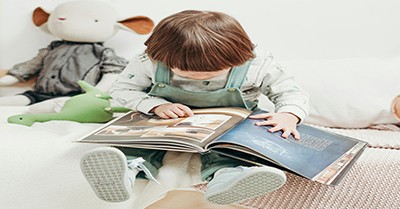


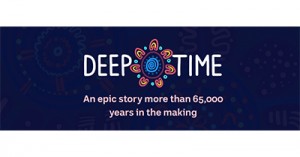

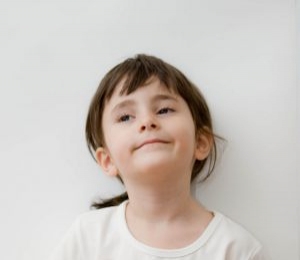 Open ended questions cannot be responded to with one word answers such as yes or no. These types of questions enables a child to provide
Open ended questions cannot be responded to with one word answers such as yes or no. These types of questions enables a child to provide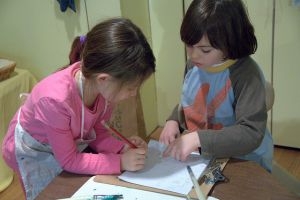 During your child’s preschool years, an important milestone begins to emerge. This is the development of pre-writing skills. Pre-writing skills are used to encourage, develop
During your child’s preschool years, an important milestone begins to emerge. This is the development of pre-writing skills. Pre-writing skills are used to encourage, develop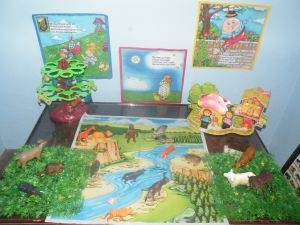 Open ended materials enables children to play freely. They are objects that have no rules to follow, use or function. Raw materials that can be
Open ended materials enables children to play freely. They are objects that have no rules to follow, use or function. Raw materials that can be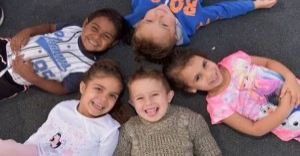 An Acknowledgment of the Country is a way of showing respect for the Traditional Owners and can be given by both non-Indigenous people and Aboriginal
An Acknowledgment of the Country is a way of showing respect for the Traditional Owners and can be given by both non-Indigenous people and Aboriginal Language plays an important role in a child’s development. It enables a child to communicate effectively with their family, learn at school, socialize with friends,
Language plays an important role in a child’s development. It enables a child to communicate effectively with their family, learn at school, socialize with friends, Like adults, children have to deal with their own stress in life. Moving house, starting a new school, preparing for a new sibling - these are
Like adults, children have to deal with their own stress in life. Moving house, starting a new school, preparing for a new sibling - these are Playdough is such a versatile material. It provides numerous benefits to children as they manipulate it, it is safe and soothing and provides children with
Playdough is such a versatile material. It provides numerous benefits to children as they manipulate it, it is safe and soothing and provides children with Teaching children about sustainability enables them to appreciate and respect the natural environment. Early childhood services can provide meaningful hand on learning experiences in order
Teaching children about sustainability enables them to appreciate and respect the natural environment. Early childhood services can provide meaningful hand on learning experiences in order Recycling is an important concept that teaches children to care for the environment. It encourages children to be responsible and show a growing appreciating for
Recycling is an important concept that teaches children to care for the environment. It encourages children to be responsible and show a growing appreciating for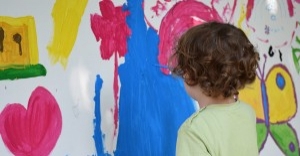 When children apply paint to paper, glue things together, or pound a lump of clay, they experiment with colour, shape design and texture.
When children apply paint to paper, glue things together, or pound a lump of clay, they experiment with colour, shape design and texture.



